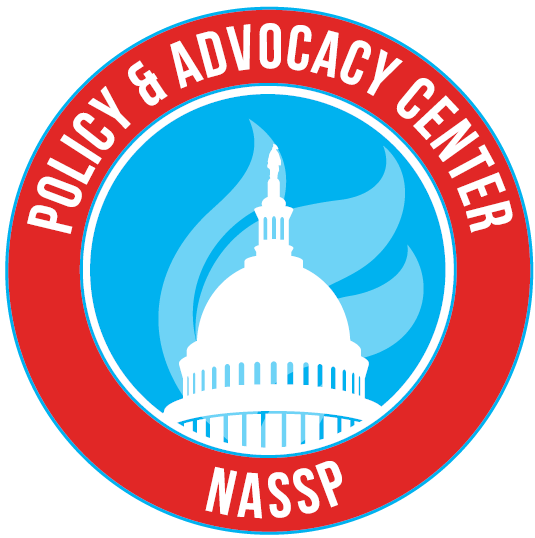Culturally Responsive Schools
To highlight the changing demographics of the K–12 student population and offer recommendations for policymakers and school leaders on how to create culturally responsive schools that will allow each student to succeed.
Students of color (black, Hispanic, Asian/Pacific Islander, or American Indian/Alaska Native) made up 47 percent of public school students nationwide in 2014, and the National Center for Education Statistics predicts this population will increase to 56 percent by 2024. In addition, 13.7 million or 19 percent of children under age 18 were in families living in poverty. Of that amount, the poverty rate was highest among black and American Indian/Alaska Native children (34 percent for both groups), followed by Hispanic (28 percent), and white and Asian children (11 percent for both groups). Data from the Centers for Disease Control and Prevention also indicate that 8 percent of all high school students self-report as lesbian, gay, or bisexual, and another 1.8 percent identify as transgender. It is also important to note that many students may fall under multiple subgroups.
These changes in student demographics across the nation create a need for educators who can effectively meet the needs of an ever-growing diverse student population. In essence, we need schools and classrooms to be culturally responsive—meaning they use the cultural knowledge, prior experiences, and learning styles of diverse students to make learning more engaging and effective. Many education experts have written about the characteristics of culturally responsive pedagogy, and there seems to be agreement on five key features: educators communicate high expectations, actively engage students in learning, facilitate learning, have a positive perspective on parents and families, and help students understand how the curriculum links to their everyday lives. According to the Alliance for Excellent Education, culturally responsive schools can help “support historically underserved and marginalized students in coping with bias, discrimination, and negative stereotypes they too often face because of their cultural, racial, and socioeconomic identities.” While policymakers are beginning to understand the importance of culturally responsive practices and are incorporating some aspects into their state education standards, a recent survey of teaching standards by New America finds that most states “do not yet provide a description of culturally responsive teaching that is clear or comprehensive enough to support teachers in developing and strengthening their [culturally responsive teaching] practice throughout their careers.”
Guiding Principles
- Building RanksTM: A Comprehensive Framework for Effective School Leaders translates new educational leadership standards into an actionable framework that promotes the success of each student by building culture and leading learning.
- The 2015 Professional Standards for Educational Leaders (PSEL) state that effective leaders strive for equity of educational opportunity and culturally responsive practices to promote each student’s academic success and well-being.
- NASSP has previously adopted position statements on educator diversity, transgender students, school discipline, and promoting rigorous courses for all students in order to offer recommendations for policymakers and school leaders to promote student equity and help each student achieve their greatest potential.
- By establishing a positive school climate and setting high academic standards for all students, the principal plays a key role in ensuring their school is culturally competent.
Recommendations
For Federal Policymakers
- Conduct research on the impact of culturally responsive schools on student achievement and provide support and technical assistance to states and districts to help them incorporate best practices into their education systems.
- Prioritize funding under the Higher Education Act for partnership grants that prepare school leaders and teachers to create a culturally responsive climate for diverse populations, including children with disabilities, English-language learners, and children from low-income families.
- Authorize a competitive grant program to assist states and districts in implementing an early warning data system to identify struggling students and create a system of evidence-based and linguistically and culturally relevant interventions.
For State Policymakers
- Adopt or adapt the PSEL to ensure that principal certification and licensure requirements include a focus on equity and cultural responsiveness.
- Revise teacher certification and licensure requirements to ensure that new teachers understand the cultures of the students they teach, how different cultures affect student learning and classroom and school behaviors, and know how to change their management style and differentiate instruction to embrace the diverse learning styles of their students.
- Revise teacher evaluation requirements to include a measure of culturally responsive practice and ensure that teachers have access to professional development to help improve their practice.
For Educator Preparation Programs
- Prepare teacher and principal candidates to understand the cultures of the students they teach, how different cultures affect student learning and classroom and school behaviors, and know how to change their management style and differentiate instruction to embrace the diverse learning styles of their students.
- Promote culturally responsive leaders by providing principal candidates with a curriculum that is focused on preparing school leaders to support diverse learners including instruction on data analysis, content knowledge, and learning experiences that strengthen leaders’ ability to support all students’ academic achievement.
- Adopt the National Educational Leadership Preparation standards that require graduates of school leadership preparation programs to understand and demonstrate the capacity to promote the current and future success and well-being of students and adults by applying the knowledge, skills, and commitments necessary to develop and maintain a supportive, equitable, culturally responsive, and inclusive school culture.
- Ensure that teacher candidates have developed the skills to create inclusive and culturally and linguistically responsive classrooms and school environments that address the social, emotional, and academic needs of their students.
For District Leaders
- Ensure that district staff reflect on their own identities, assumptions, beliefs, and values and how those factors influence decisions they make about the staff and students they serve.
- Develop a baseline of cultural competency for your district and all schools by conducting a cultural audit that incorporates various forms of stakeholder feedback and includes a review of key policies and practices. Use those results to identify areas of improvement and develop strategic goals and objectives.
- Ensure that principals and teachers have professional development opportunities to help them assess their own cultural viewpoints and biases, set high expectations for all students, acknowledge diverse learning styles, use culturally responsive pedagogy, and effectively engage diverse families and community members.
- Develop schedules, structures, and staffing that provide opportunities for school leaders and teachers to enhance family and community engagement.
- Implement multitiered systems of support that encompass prevention, wellness promotion, and interventions that are based on student need and promote close school-community collaboration such as restorative practices and positive behavioral interventions and supports.
For School Leaders
- Be reflective about your own identity, assumptions, beliefs, and values and how they create a lens through which you see the world—which will ultimately help you honor the diverse identities of the staff and students you serve.
- Review special education referrals, participation rates for students in advanced courses, and discipline data disaggregated by race, ethnicity, gender, LGBTQ status, family income, and disability to identify areas for improvement and provide insight on future professional development needs.
- Use the Diversity Responsive Principal Tool to determine whether you have implemented policies and practices that enhance the academic success of students of diverse racial, ethnic, cultural, and linguistic backgrounds.
- Model expectations for your staff and students by using language that is accepting and respectful of all cultures represented in the school.
- Ensure your school has systems in place to mitigate racial or cultural tensions.
- Familiarize yourself with culturally responsive pedagogy, offer curriculum and assessments that are unbiased and culturally sensitive, support teachers in their efforts to transform their teaching practices, and consider new teachers’ knowledge and support of culturally responsive teaching in your hiring decisions.
- Reinforce professional development efforts by mentoring, supporting, and evaluating teachers’ use of culturally responsive pedagogy and differentiated instruction.
- Create a school leadership team and student advisory council comprising a diverse group of voices to help you make decisions about policies and procedures at your school.
- Ensure that all staff, students, families, and community members have a sense of membership and belonging at your school and provide forums both inside and outside of the classroom where everyone can learn about each other’s diverse backgrounds.
- Develop relationships with families and community members, ensure that you and your staff speak or honor students’ native languages, and create schedules and structures that allow families to authentically engage in school activities and decision making. Involve students and their families in setting behavioral norms for your school to ensure that school expectations build on the values and beliefs of the community.
Resources
Centers for Disease Control and Prevention (2016). Sexual identity, sex of sexual contacts, and health-related behaviors among students in grades 9-12 – United States and selected sites, 2015. Retrieved from https://www.cdc.gov/mmwr/volumes/65/ss/pdfs/ss6509.pdf.
Centers for Disease Control and Prevention (2019). Youth risk behavior survey data summary and trends report 2007–2017. Retrieved from https://www.cdc.gov/healthyyouth/data/yrbs/pdf/trendsreport.pdf.
Council of Chief State School Officers (2019). A vision and guidance for a diverse and learner-ready teacher workforce. Retrieved from https://ccsso.org/sites/default/files/2019-01/Vision%20and%20Guidance%20for%20a%20Diverse%20and%20Learner-Ready%20Teacher%20Workforce_FINAL_0.pdf.
Ellison, J. (2018). Cultural responsiveness starts in the principal’s office. Retrieved from https://www.competencyworks.org/equity/cultural-responsiveness-starts-in-the-principals-office/.
Ford, D. (2010). Culturally responsive classrooms: Affirming culturally different gifted students. Gifted Child Today, 33(1). Retrieved from https://files.eric.ed.gov/fulltext/EJ874024.pdf.
Harper, R. (2018). Science of adolescent learning: Valuing cultures, experiences, and environments. Retrieved from https://all4ed.org/wp-content/uploads/2018/12/Science-of-Adolescent-Learning-Valuing-Culture-Experiences-and-Environments.pdf.
Hanover Research (2014). Strategies for building cultural competency. Retrieved from https://www.gssaweb.org/wp-content/uploads/2015/04/Strategies-for-Building-Cultural-Competency-1.pdf.
Hollowell, C. (2019). Culturally responsive school leadership: how principals use culturally responsive leadership strategies to develop engaging and inclusive school environments for all students. Retrieved from https://digitalcommons.brandman.edu/edd_dissertations/239/?utm_source=digitalcommons.brandman.edu%2Fedd_dissertations%2F239&utm_medium=PDF&utm_campaign=PDFCoverPages.
Khalifa, M. (2016). Culturally responsive school leadership: a synthesis of the literature. Retrieved from https://www.cue.pitt.edu/sites/default/files/images/CRSL.pdf.
Klotz, M. (2006). Culturally competent schools: Guidelines for secondary school principals. Principal Leadership, 6(7). Retrieved from https://www.nasponline.org/Documents/Resources%20and%20Publications/Handouts/Families%20and%20Educators/Culturally%20Competent%20Schools%20NASSP.pdf.
Kozleski, E. (2010). Culturally responsive teaching matters! Equity Alliance. Retrieved from http://www.equityallianceatasu.org/sites/default/files/Website_files/CulturallyResponsiveTeaching-Matters.pdf.
Krasnoff, Basha. (2016). Culturally responsive teaching. Region X Equity Assistance Center of Education Northwest. Retrieved from https://educationnorthwest.org/sites/default/files/resources/culturally-responsive-teaching.pdf.
National Association of Secondary School Principals (2018). Building ranks: A comprehensive framework for effective school leaders. Reston, VA: Author.
National Association of Secondary School Principals. The diversity responsive principal tool [Leading Success: Module 4]. Retrieved from https://www.nassp.org/professional-learning/online-professional-development/leading-success/module-4/activity-5-diversity-responsiveness/.
National Center for Education Statistics (2018). The condition of education. Retrieved from https://nces.ed.gov/programs/coe/.
National Policy Board for Educational Administration (2018). National educational leadership preparation standards: Building level. Retrieved from http://npbea.org/wp-content/uploads/2018/11/NELP-Building-Standards.pdf.
New America (2019). Culturally responsive teaching: A 50-state survey of teaching standards. Retrieved from https://www.newamerica.org/education-policy/reports/culturally-responsive-teaching/.
University Council for Educational Administration (n.d.). FIPSE LSDL modules. Retrieved from http://www.ucea.org/fipse/overview-and-introduction/.


